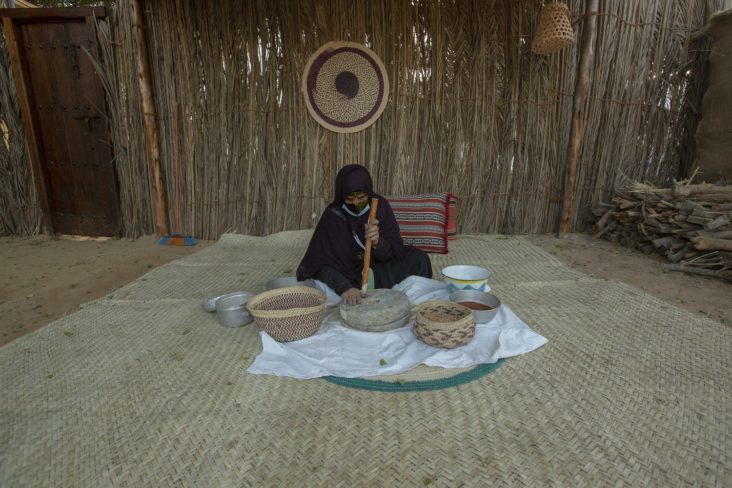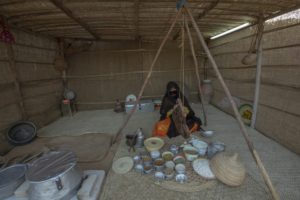Sharjah Heritage Days Offers A Peek Into The Bedouin Traditions Of The Past

From herbal medical practices and rustic culinary traditions to the art of baking and weaving, the recreated Bedouin village at the 18th Sharjah Heritage Days offers a fascinating glimpse into a unique way of life characterised by utmost simplicity and extreme resourcefulness.
Having to rely on what was available in the desert landscape, the Bedouins respected nature and utilised every resource found in the arid environment.
The daily meal eaten in the desert, Umm Badar demonstrates, was rice mixed with a generous helping of chami – a crumbly cheese-like dish made from goat milk. Chami is mixed with a dollop of ghee and dried ghaf leaves and spread over the rice on which fresh yoghurt laced with ghee is drizzled.Topped with a sprinkle of cumin powder, this dish, called ‘matcheecha’, was the staple in the desert. Meat was reserved only for special occasions.
Ayesha, an Emirati grandmother, demonstrates the art of cooking flatbread on live coal. The hardened wheat bread is then crushed into flaky bits, mixed with ghee, oil, honey or dibs, and eaten traditionally for breakfast or any time of the day.
The Bedouin village features some of the indigenous plants commonly found in the desert, and Umm Yousef, demonstrates how the woolly flowers and seed heads of the perennial, soft-wooded Al Aral were traditionally used as stuffing for pillows and cushions. An expert in applique work embroidery, her skilled craft adorns the colourful pillows.
Mariam, the ‘herbal doctor’ is still sought after for her traditional cures with natural ingredients that provide relief from headache, back ache and even snake bites.
From large tents to carpets, blankets, and saddles and belts for camels, visitors can watchEmirati women practice the art of weaving the hair of camels and the wool of goats and sheep into practical items for everyday use.
A camel, some goats, and falcons, show the bond the nomadic people had with their animals.



